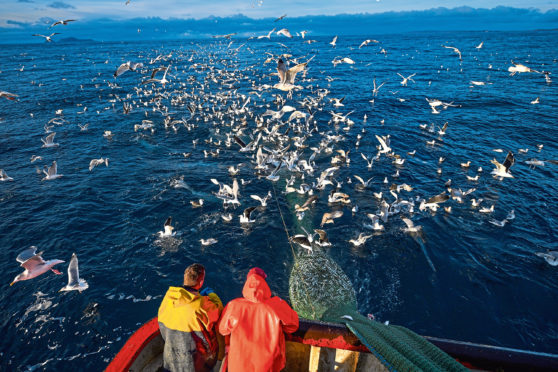The UK fishing industry is in danger of ending up with nothing left to catch if steps are not taken to enforce a ban on discards at sea, peers have warned.
A House of Lords inquiry into the so-called landing obligation, which fully came into force at the start of this year, has concluded discarding may still be happening.
The peers have called for the mandatory use of remote electronic monitoring (Rem) on all vessels fishing in UK waters after Brexit.
Before the ban, which was phased in over several years and requires whole catches to be landed, there were widespread fears that unwanted fish could be left rotting on the quayside due to a lack of disposal facilities.
There were also major concerns that non-target species could quickly “choke” quota limits and keep boats tied up in port for half the year.
A report published today by the Lords’ energy and environment sub-committee says there is no sign of the either of these outcomes – raising questions about the level of landing obligation compliance.
“Government is allowing this now illegal fishing practice to go unchecked,” committee chairman Lord Teverson said yesterday.
He added: “Unless the discard ban is properly implemented and enforced, the UK’s fishing industry could in the future find itself with nothing left to fish.”
Lord Teverson also said it “wholly inappropriate” that incentives were being used to encourage fishers to follow the rules, adding: “It sends the wrong message that abiding by the law is voluntary.
“Good progress has been made in recent years to improve the health of fish stocks.
“But now it seems that fishing ministers are once again tempted to make decisions based on short-term economic benefits rather than long-term sustainability.”
Rem systems combine satellite technology with sensors that can detect when a vessel is fishing and how much it catches.
Today’s report – The EU Fisheries Landing Obligation: Six Years On – says the benefits of Rem are well understood but the governments in Edinburgh and London are reluctant to introduce it unless other EU member states place a similar requirement on their fleets.
The peers have also called for fishing gear improvements and the swift implementation of bycatch reduction plans.
Scottish White Fish Producers’ Association chief executive Mike Park insisted the industry was implementing the law “to the fullest”, making operational changes to ensure compliance.
Scottish Fishermen’s Federation chief executive Bertie Armstrong said “absolutely every effort” had been made to work within the rules.
Mr Armstrong also said Brexit would deliver “a system of practicable regulations that achieve the objective of ending discards without tying the industry up in knots and the fishing fleet at the quayside”.
